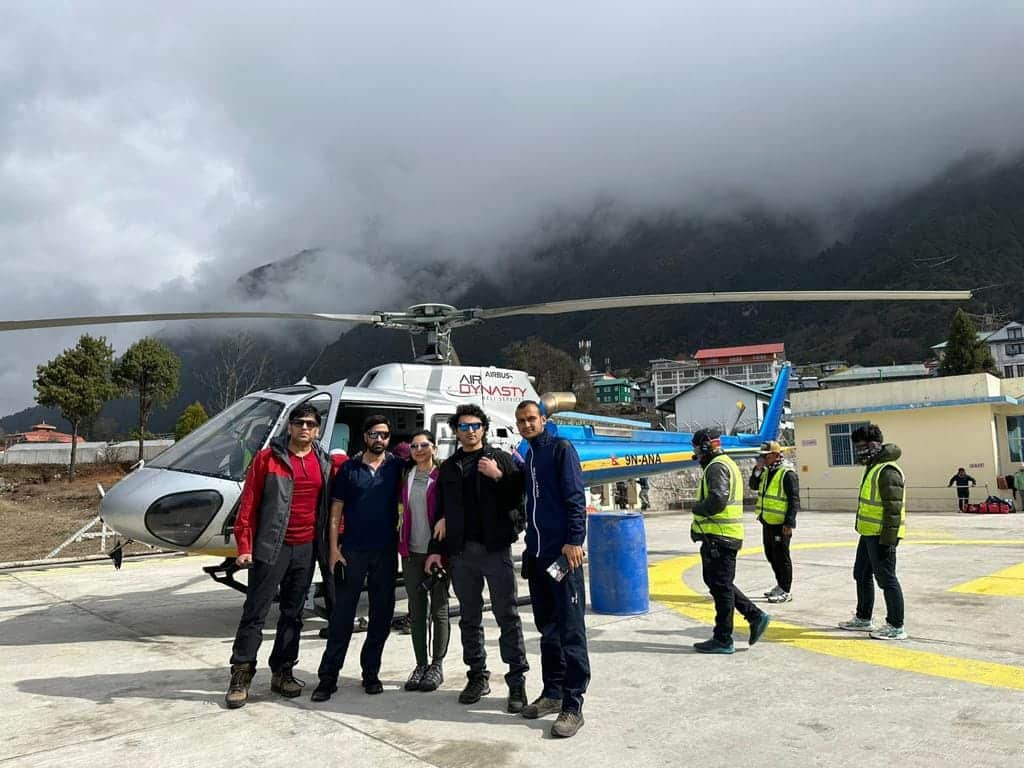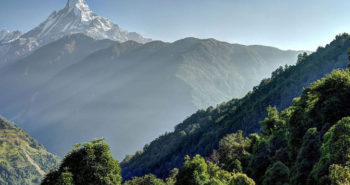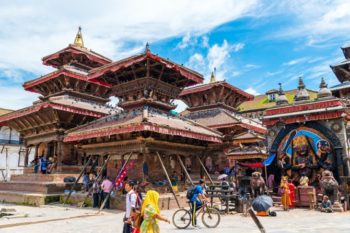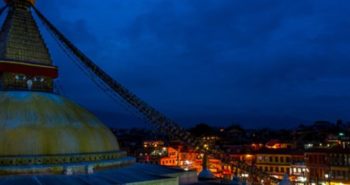How Difficult is Everest Base Camp Trek?
Been told it’s two long weeks of hard trekking? Doubting your ability to achieve this?
Let us explain clearly what is involved in this 12-day trek. And give you details of the distances involved and an idea of how difficult it is.
Let’s also keep in mind trekking is different for everybody. Everybody – yes, your body will be able to hike faster or slower than your companion. At Magical Nepal, we ensure that no one feels pressured to go faster than they are able. We believe in enjoying the scenery, the atmosphere, and camaraderie on the trail and not just getting from A to B.
Easy/ Difficult/ Strenuous
These are the terms you will see on every trekking itinerary. But what exactly does easy or difficult, or strenuous mean? Your guide will find areas of the trek ‘easy,’ whereas you might find that area hard. A local Sherpa porter, born and bred at high altitude, will most likely out-walk your guide on any given day. So, what do these terms mean? To the average person who spends only a few days a year hiking.
Let’s start by saying the Everest Base Camp Trek is strenuous. To give you some idea of what that means, you will walk around 6 to 7 hours daily. And that is not on flat ground. So, you need to be physically fit before tackling it. However, not every day is a ‘strenuous’ day. For example, there is an acclimatization day at Namche Bazaar.
Having said that, if you have more time, we can tailor your itinerary according to your age and physical fitness level. We have guided people over 70 and as young as 10. Please ask us. Also, if you have concerns, we can direct you to one of our less strenuous treks.
Day-by-Day Breakdown of the EBC Trek
Day 1: Kathmandu to Lukla (Flight) to Phakding

| Road Distance/ Duration: | 4 hours drive |
| Flight Distance: | 135 km/ 84 miles |
| Flight Duration: | 30 minutes |
| Walking Distance: | 9 km/ 5.6 miles |
| Walking Duration: | 4.5 hrs |
| Difficulty: | Easy |
| Elevation: | Kathmandu (1,400 m /4,593 ft): Lukla (2,845 m /9,334 ft): Phakding (2,651 m/ 8,698 ft) |
| Elevation change: | 1,445 m / 4,740 ft ascend, then 196 m/ 643 ft descend |
Nothing too strenuous here. A bit tiring as you will be traveling by road overnight but rest up the afternoon before. Walking to Phakding is not too hard and gets your body used to what is to come. If all goes according to plan flight-wise, you will be in Phakding for a late lunchtime to get your bearings and relax a little.
Day 2 Phakding to Namche Bazaar
| Walking Distance: | 9 km/ 5.6 miles |
| Walking Distance: | 9 km/ 5.6 miles |
| Walking Duration: | 5-6 hrs |
| Difficulty: | Strenuous |
| Elevation: | 789 m / 2,589 ft |
| Elevation change: | Phakding (2,651m / 8,698 ft ) to Namche Bazaar (3,440m / 11,286 ft) |
Things are getting a bit tougher as you head towards Namche, reaching there late afternoon.
Day 3 Acclimatization Day in Namche Bazaar (Day trip to Khumjung)
| Walking Distance: | 16 km/ 10 miles |
| Walking Duration: | 5 hrs |
| Walking Distance: | 16 km/ 10 miles |
| Difficulty: | Medium |
| Elevation: | Namche Bazaar (3,440m / 11,286 ft) to Khumjung (3,790m / 12,434 ft ) |
| Elevation change: | 350m/ 1,148 ft ascend |
If you had any aches and pains from yesterday, you could stretch them out today with either a hike to see how Sir Edmund Hillary’s positive impact on the area or a walk around town.
Day 4 Namche Bazaar to Tengboche
| Walking Distance: | 12 km/ 7.5 miles |
| Walking Duration: | 5-6 hrs |
| Walking Distance: | 16 km/ 10 miles |
| Difficulty: | Easy-Medium |
| Elevation: | Namche Bazaar (3,440m / 11,286 ft) to Tengboche (3,870m / 12,697 ft ) |
| Elevation change: | 430m / 1,410 ft ascend |
Today is relatively easy for the average trekker, and the route takes you through Buddhist countryside to stunning scenery. However, we should pay attention to our bodies now in case the high altitude causes any problems.
Day 5 Tengboche to Dingboche
| Walking Distance: | 12 km/ 7.5 miles |
| Walking Duration: | 5 hrs |
| Difficulty: | Hard |
| Elevation: | Tengboche (3,870m / 12,697 ft ) to Dingboche (4,360m / 14,304 ft.) |
| Elevation change: | 490m / 1,608 ft ascend |
A harder day as the elevation climbs, and the high altitude makes moving more taxing. Go slowly, stay hydrated, and stay focused.
Day 6 Acclimatization Day at Dingboche (Day trip to Nagarjun Hill)
| Walking Duration: | 4 hrs |
| Difficulty: | Hard |
| Elevation: | Dingboche (4,360m / 14304 ft.) to Nagarjun Hill (5,100 m / 16,732ft ) |
| Elevation change: | 740 m/ 2,427 ft ascend and descend |
Another acclimatization day, but since the best way to acclimatize is to keep moving, there is a ‘hard’ hike to a viewpoint. By now, you will be getting used to the daily muscle and cardio workouts, and things are loosening up.
Day 7 Dingboche to Lobuche
| Walking Distance: | 12 km/ 7.5 miles |
| Walking Duration: | 5-6 hrs |
| Difficulty: | Strenuous |
| Elevation: | Dingboche (4,360m/ 14,304 ft.) to Lobuche (4,940m/ 16,207 ft) |
| Elevation change: | 580m/ 1,903 ft ascend |
Back to the strenuous trails today. With your pre-trek level of good fitness, you can do it!
Day 8 Lobuche to Gorakshep ) (afternoon hike to Kalapatthar)
| Walking Distance: | 15 km/9.3 miles |
| Walking Duration: | 7-8 hrs |
| Difficulty: | Strenuous |
| Elevation: | Lobuche (4,940m / 16,207 ft) to Gorakshep (5,170m / 16,962 ft ) to Kalapatthar 5,545m / 18,192 ft |
| Elevation change: | 605 m / 1,985 ft ascend 375m / 1,230 ft descend |
Despite this being a long and strenuous day, the rewards are such that you will quickly forget the muscle aches.
Day 9: Gorakshep to Pheriche (Morning Hike to EBC)
| Walking Distance: | 19.6 km/6 miles |
| Walking Duration: | 7-8 hrs |
| Difficulty: | Strenuous |
| Elevation: | Gorakshep (5,170m / 16,962 ft ) to EBC (5,364 m / 17,598 ft) to Pheriche (4,371m / 14,340 ft) |
| Elevation change: | 194m / 636 ft ascend 993m / 3,257 ft descend |
Another outstanding day when you reach Everest Base Camp by working hard on the trail. At least you do not have to climb up to the summit!
Day 10: Pheriche to Namche Bazaar
| Walking Distance: | 16 km/9.9 miles |
| Walking Duration: | 6-7 hrs |
| Difficulty: | Strenuous |
| Elevation: | Pheriche (4,371m / 14,340 ft) to Namche (3,440m / 11,286 ft) |
| Elevation change: | 931m / 3,054 ft descent |
It’s home straight now, and although a hard day, you find even these long hours of strenuous walking are becoming more routine. Watch out for your knees today tho.
Day 11: Namche to Lukla
| Walking Distance: | 16 km/9.9 miles |
| Walking Duration: | 5-6 hrs |
| Difficulty: | Strenuous |
| Elevation: | Namche (3,440m / 11,286 ft) Lukla (2,845 m /9,334 ft) |
| Elevation change: | 595m / 1,952 ft descend |
Another day which is hard on the knees as you descend to the airport at Lukla.
Day 12: Lukla to Kathmandu via Ramechhap (Flight)
| Walking Distance: | 135 km/ 84 miles |
| Flight Duration: | 30 minutes |
| Drive Duration: | 5 to 6 hours |
| Difficulty: | Easy |
| Elevation: | 1,445 m / 4,740 ft descend |
| Elevation change: | 1,445 m / 4,740 ft descend |
Relax as you fly out of Lukla, then board road transport for Kathmandu.
Overview
You need to have a good level of physical fitness before you tackle the EBC Trek. But if you are still unsure, please talk to us. We can ensure your guide takes it at a pace that is suitable for you. Consider adding a couple more days to the trek to break down some of the longer hikes or spend more time acclimatizing. Or you could break your trek at Gorakshep and helicopter down from there. Or, to be completely different, you could take a day helicopter tour of Everest Base Camp and see the mountains from a different and more relaxed perspective.


